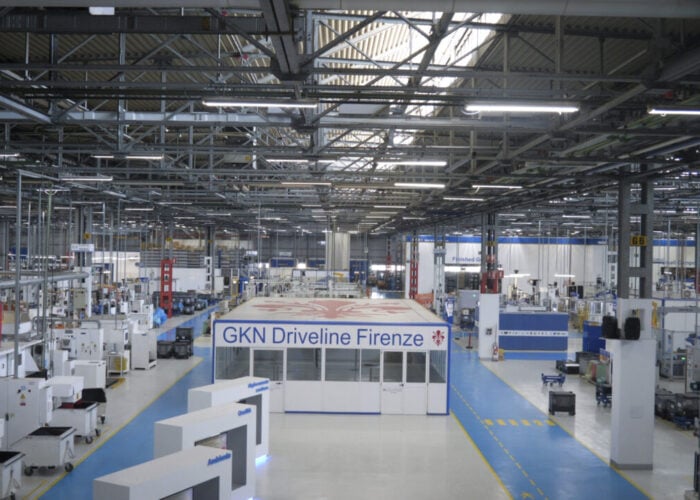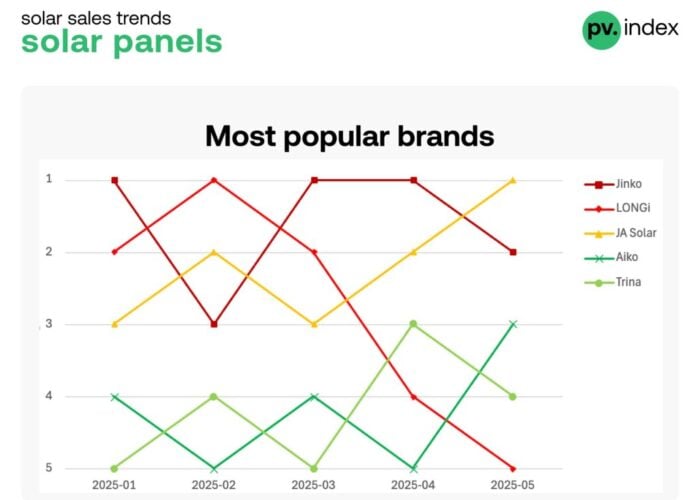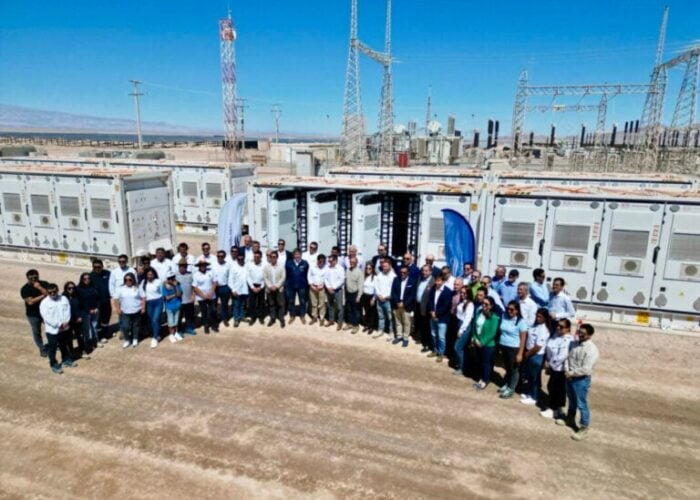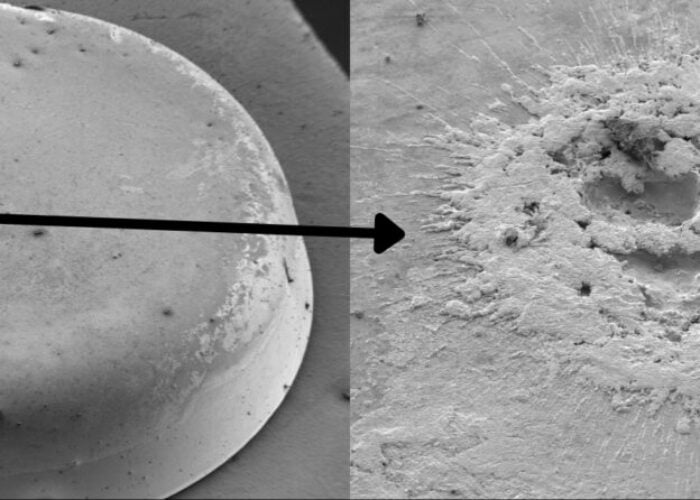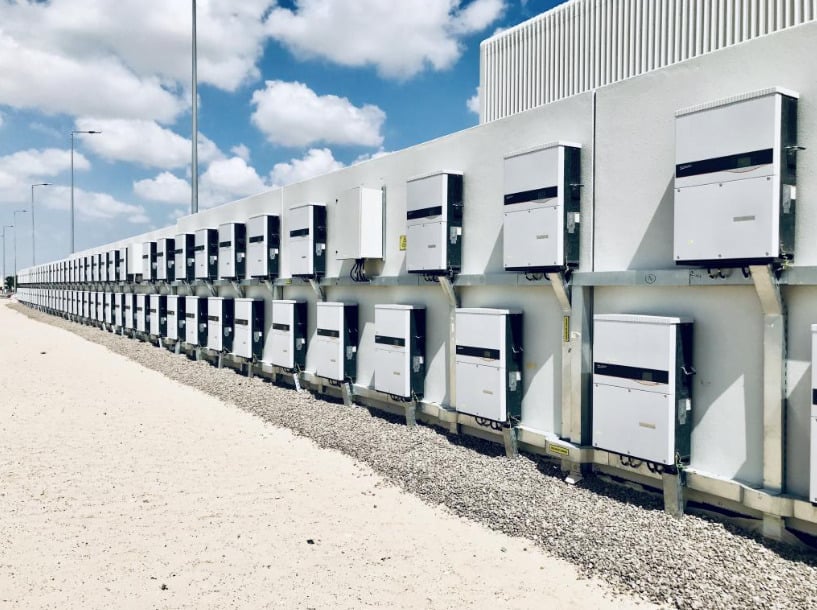
In the last couple of years, the market has seen a few commercial and industrial (C&I) inverter models and associated dataloggers with no RS-485 connections ports. So, this leads to the question, will the Modbus RTU RS-485 connection be phased out?
What is the difference between the Modbus RTU RS-485 and Modbus TCP?
Modbus RTU RS-485 is a Remote Terminal Unit (RTU) Modbus over a serial RS-485 connection, whereas Modbus TCP is Modbus over an Ethernet connection.
Unlock unlimited access for 12 whole months of distinctive global analysis
Photovoltaics International is now included.
- Regular insight and analysis of the industry’s biggest developments
- In-depth interviews with the industry’s leading figures
- Unlimited digital access to the PV Tech Power journal catalogue
- Unlimited digital access to the Photovoltaics International journal catalogue
- Access to more than 1,000 technical papers
- Discounts on Solar Media’s portfolio of events, in-person and virtual
With Modbus TCP, the Modbus data is encapsulated inside a TCP/IP packet and uses IP addresses to communicate with slave devices. This enables Modbus TCP devices to connect and communicate over existing Ethernet and fiber networks easily. Therefore, any Ethernet network that supports TCP/IP should directly support Modbus TCP. Also, Modbus TCP allows for many more addresses than Modbus RTU RS-485, including multiple masters and speeds in the gigabit range.
While Modbus RTU has a limitation of 247 nodes per network, Modbus TCP networks can have as many slaves as the physical layer can handle. Often this number is somewhere around 1,024.
The following table covers the fundamental differences concerning its application in C&I PV Solar Equipment.
| Modbus RTU RS-485 | Modbus TCP |
|---|---|
| RTU has been in existence for a long time and is supported by many inverter, power meter, and met station/sensor manufacturers. | Modbus TCP/IP is easy to integrate into a new or existing Ethernet network (Intranet or Internet). |
| Max number is 247 nodes per network | Up to 1,024 devices per network |
| The maximum distance of RS-485 without using a repeater is 1.2km at baud rates up to 90Kbps. | It depends on the capacity of the communication cable (i.e., 100m with a Cat6), and it can use the existing intranet/internet network. |
| Can reach 10 Mbit/s at 10m. (Speed of operation depends on the line length) | Modbus TCP data send at the speed of your Ethernet connection. (Most Modbus/TCP hardware these days is 100 Mbit/s) |
Data logger compatibility
Inverter and PV monitoring companies offer many datalogger devices with the RS-485 Modbus RTU and the Ethernet Modbus TCP ports on the unit. The datalogger is the communication bridge between the inverter and the monitoring peripherals such as power meters and weather stations. Often the inverter communicates via Modbus TCP Ethernet to the datalogger in contrast to the power meters and weather stations which usually only have Modbus RTU RS-485 connections.
A PV monitoring weather station with a Modbus TCP Ethernet connection would offer a considerable integration advantage. A Modbus TCP connection on the station provides an even faster, straightforward setup with configuration options enabled via an embedded web server, web browser software program, or mobile app.
Remote monitoring and communication
Modbus TCP is an open protocol often chosen to harmonise communications, enabling the interconnection of equipment from industrial and energy scopes over longer distances via TCP/IP.
To enable real-time monitoring, larger PV power plants require reliable two-way communication with low latency. This level of monitoring provides accurate information for the electrical and environmental parameters and enables the system operator to evaluate the overall performance and identify any abnormal conditions and faults.
The simple and efficient ethernet communication from Modbus TCP with the local SCADA system or other data-collection platforms enables remote monitoring. Also, command communication between “direct marketer” (direct marketing company that usually trades PV generated electricity) and remotely controllable PV plants is possible in a TCP/IP Inverter network.
A Modbus TCP weather station
The soon-to-be-launched PVMet 200 TCP from RainWise is the first compact PV monitoring weather station that features a native Modbus TCP ethernet connection. In the past, the only way to give Modbus RTU devices TCP Ethernet connectivity was via expensive standalone Modbus RTU to Modbus TCP converter gateways.
O&M service companies can take advantage of an easy setup via an embedded web server and remote access for hassle-free firmware upgrades. Future PVMet TCP models will also allow for remote calibration updates of thermopile sensitivity. Irradiance sensors have a range of sensitivity calibrations, which can vary from sensor to sensor. In most cases, especially with thermopile sensors, each sensor will be supplied with a sensitivity constant; this is typically expressed as MicroVolts per Watt meter squared (µV/Wm-2).
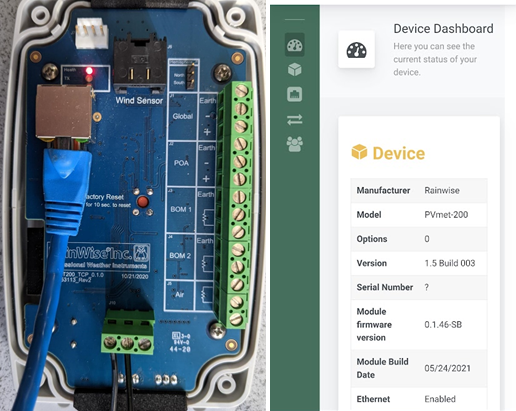
Security
The main benefit of this direct TCP connection is that you can monitor the device from anywhere. The downside is that your inverter becomes a target for hackers. In some cases, your solar inverter will present itself directly as an internet-facing device, so using VPN security and firewall devices is a must in a TCP/IP network with Modbus TCP devices.
Conclusion
Ethernet’s rapid adoption within the process control and automation industry has allowed Modbus TCP to become the most widely used, fastest-growing, and supported industrial protocol. Unlike Modbus RTU, Modbus TCP will allow for multiple masters to poll the same slave device simultaneously. This is permitted because TCP/IP over Ethernet enables various messages to be sent, buffered, and delivered without the requirement of token passing or total bus control, which is often the case with the RS-485 protocol.
We are confident that the Modbus TCP Ethernet connection for most devices in an inverter environment will be more and more popular. RainWise has direct and current examples of the Modbus TCP demand for weather stations, especially from leading inverter companies like SMA and FIMER/ABB.
But we can also assume that Modbus RTU with the serial RS-485 connection will still be around in some form for a long time.


